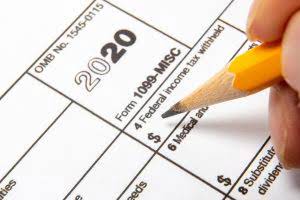Warning: Trying to access array offset on value of type bool in /var/www/wp-content/themes/enfold/framework/php/function-set-avia-frontend.php on line 536
Small Business Guide to Retail Accounting

Essentially, the retail method tracks sales, COGS, and inventory at their retail value before making an adjustment to estimate the actual costs. The advantage of this is that COGS at retail is just sales and is much easier to track than actual COGS. The periodic method of tracking your inventory can be less convenient and more labor-intensive, but it might be preferable if your company can’t afford a fully capable POS system. This inventory-tracking method requires you to manually count and track inventory periodically, such as weekly or monthly. A major drawback of this method is that, because you don’t have a POS system tracking your sales, you don’t have a way to determine what items were sold, stolen or broken.
“Overnight Supervisor (part time) – Flagship on Fifth”
Some common methods for valuing and counting inventory are First In, First Out (FIFO); Last In, First Out (LIFO); and Weighted Average Cost. Try Synder’s free trial to see how it can improve your business accounting, and join our informative Weekly Public Demo for additional insights and advice. Synder simplifies the reconciliation process, making sure all your financial data matches up correctly.
Tax management
For instance, if a pair of shoes costs $40 to manufacture and retailers sell them for $100 each, the cost-to-retail ratio is 40% (or $40/$100) when expressed as a percentage. You can do it manually, but it will be very time consuming, or it can be done using specialized software, making it easier to identify loss, damage, or theft. Using the example above, your inventory was $3,200, total sales were $3,750, and the cost-to-retail ratio was 40%. It’s most common https://www.bookstime.com/articles/what-is-periodic-inventory-system in businesses that sell high-ticket items or have a smaller stock quantity. For example, if your business sells jewelry, you’ll assign a price to each item based on its material and details. With the LIFO method, the cost of goods sold would be $90 since the last 20 basketballs you purchased cost $6 dollars each.

What Is the Retail Method?
- This number shows the in-between of how much the business paid for purchased inventory and the selling price.
- You can outsource accounting, hire an in-house accountant or try to do the accounting yourself.
- Numbers flying around, confusing terms, and the constant pressure to make informed decisions – it’s enough to make any entrepreneur’s head spin.
- For example, you can make order management more organized by tracking if the requested item is discontinued or not.
- One of the key challenges of retail is tracking inventory, especially if you buy multiple inventory units that do not all cost the same amount.
The FIFO accounting method assumes that the inventory purchase costs will also be recognized first and the value of your total inventory will decrease. The FIFO method is especially useful for perishable items and is popular among food retailers because of its practical advantages. The specific identification is another inventory costing method that tracks the cost of each item you have in stock by assigning a different price to each item, usually with SKUs. This method helps businesses keep track of every item in their inventory without grouping them. An inventory system provides retail-based businesses a comprehensive account of available items and the monetary value of these inventory items.

What Are the Advantages of Customized Accounting Software?

If you’re choosing an accounting method for your retail business, there are also some advantages and disadvantages. The third step is to track your sales to determine how much you made. Using the same example, let’s say you sell 130 bottles of water for $25 each. You’ll first have to find the cost-to-retail percentage by dividing the cost of your product by the sale price.

- If you have a retail store, you probably considered using retail accounting.
- However, you have chosen to use a keystone markup strategy, so you know you have a 50% markup on all items, regardless of what they are.
- This is why the calculations made using the retail inventory method should serve only as an estimate.
- If you want to do the accounting yourself, it may be worth looking into accounting software.
- Using the weighted average, you’ll divide the total cost of the hair ties by the number you purchased, which is 20 cents each.
During the quarter, your sales recorded through our point of sale system reached $40,000. In addition, during this period you invested US$15,000 in replenishing your stock of fixtures and accessories. For example, your business purchased 30 basketballs for $5 each, then at a later date, you purchased 20 more basketballs, but for $6 each.
- These principles, like universal laws in the world of finance, ensure consistent and reliable financial reporting, allowing you to understand your business’s financial health accurately.
- The method you choose will depend on your business and what you sell.
- A major drawback of this method is that, because you don’t have a POS system tracking your sales, you don’t have a way to determine what items were sold, stolen or broken.
- Statistics say retail business in the U.S. has only 63% of inventory accuracy, leading to stock replenishment errors.
- These methods can be used for calculating inventory endings for particular purposes.
- We suggest you entrust system migration to professionals to minimize errors and quickly restore the functioning of your business.
- The advantage of this is that COGS at retail is just sales and is much easier to track than actual COGS.

Let’s also say you have a 30% markup on all items and you know that your inventory was valued at $100,000 last quarter. In retail accounting, you estimate your inventory’s value rather than calculate it manually. You also assume constant prices, price changes, and price change rates across all units of the same item. These assumptions make for quicker calculations that eliminate the need for physical inventory counts while at least somewhat accurately suggesting the cash tied up in your company’s inventory. Although cost accounting method can provide better accuracy, it usually requires more complex calculations. The main advantage of retail accounting is how easily it sets inventory prices to match what customers pay.
The retail method works well when there’s a clear relationship between wholesale purchasing prices and retail selling prices. Then, you decided to buy 100 more water bottles which cost you $12 each, totaling up to $1,200. For example, your business purchased 50 bags of chips for $1 each, then at a later date, retail accounting decided to buy 30 more, but the price rose to $2 each.
The weighted average is an inventory costing method that averages the cost of your items. This method is the most useful when dealing with goods you rotate or mix up, like smaller identical items in large quantities. The first in, first out (FIFO) is an inventory costing method that calculates inventory value, considering that the goods you acquired first are https://www.facebook.com/BooksTimeInc/ the first ones you sell. This method is commonly used by businesses that sell inventory with an expiration date, like food and drinks. Gravel and sand retailers who sell materials by the ton often use the LIFO inventory costing method. The FIFO method of inventory costing assumes the first items entered into your inventory are the first items you sell.

